A Grain of Truth: Recreating Dr. Emoto’s Rice Experiment
Object(wp_term)#17720 (10) { ["term_id"]=> int(396) ["name"]=> string(12) "carrie poppy" ["slug"]=> string(12) "carrie-poppy" ["term_group"]=> int(0) ["term_taxonomy_id"]=> int(396) ["taxonomy"]=> string(7) "authors" ["description"]=> string(333) " carrie poppy is the cohost of the investigations podcast oh no, ross and carrie . she regularly writes and speaks on social justice, science, spirituality, faith, and claims of the paranormal. she also performs, mostly in funny things. she only has one fully functioning elbow. " ["parent"]=> int(0) ["count"]=> int(39) ["filter"]=> string(3) "raw" } } --> carrie poppy.
Are you a human? Do you have access to the internet? Then you may already know about Dr. Masaru Emoto, the Japanese “scientist” [1] who magically turns normal rice into gross rice, simply by yelling at it.
But for the uninitiated, Dr. Emoto gained international fame from the film What the Bleep Do We Know?! , which praised his experiments on the cellular structure of water. Maybe you remember this dramatization, in which a science docent describes Emoto’s experiments, and a creepy guy creeps up on Marlee Matlin to explain everything, just in case she’s a complete buffoon.
During his studies, Emoto separated water into one hundred petri dishes and assigned each dish a fate: good or bad. The good water was blessed or praised for being so wonderful (“Oh look at you wonderful little water droplets! One day you shall be a. water slide!” I imagine him saying). The bad water was scolded (“May you become that gross grey sludge that builds up under a Zamboni,” he maybe said). Each petri dish was frozen, allegedly under similar conditions. Lo and behold, when the frozen water was viewed under a microscope, the water which had been praised and valued had rearranged itself into beautiful crystalline structures. The “bad” water was as ugly as ice crystals can get (which, to be honest, isn’t that ugly), showing a lack of symmetry and more overall jaggedness. Emoto started to get a little giddy with his findings, trying new methods like taping the words “Adolf Hitler” to a glass of water and seeing what happened (allegedly, the water was very ugly). [2]
He even had a team in Tokyo transmit their thoughts to some water across the world, to California, in a double-blinded study. According to the abstract , “crystals from the treated water were given higher scores for aesthetic appeal than those from the control water.” [3] We are all made up largely of water and, as Emoto explained, that is why this study is so important and the findings are so serious.
Except that they aren’t. As Stanford University professor Emeritus William Tiller (also featured in What the Bleep ) pointed out after the film’s release, [4] it is extremely easy to manipulate the crystalline structure of water, especially by adding contaminants or tinkering with the cooling rate of the water. In Dr. Tiller’s words, “In Dr. Emoto’s experiments, [supercooling] was neither controlled nor measured, a necessary requirement to be fulfilled if one wanted to prove that it was the new factor of specific human intention that was causative.” [5] Apparently, Emoto’s experimental protocols are so lacking as to be unrepeatable, and even the most basic attempts at scientific controls are absent. Regular Skeptical Inquirer contributor Harriet Hall reviewed Emoto’s book about his experiments herself, giving it the honor of “the worst book I have ever read. It is about as scientific as Alice in Wonderland.” [6] In one portion of the book, Emoto recalls watching a priest perform incantations into a lake, causing the lake to become more and more clear. And then things get really weird:
The crystals made with water from before the incantation were distorted, and looked like the face of someone in great pain. But the crystals from water taken after the incantation were complete and grand… A few days after this experiment, an incident was reported in the press. The body of a woman was found in the lake, and when I heard about this I remembered the crystals created from the water before the prayer, and remembered how the crystals had looked like a face in agony. Perhaps through the crystals, the spirit of this woman was trying to tell us something. I would like to think that her suffering was alleviated in part by the incantation. [7]
As What the Bleep faded to memory, Emoto and his water evaporated too. [8] But recently, Emoto has made a comeback in the form of a viral video meme of people carrying out yet another Emoto water experiment, now in their own kitchens. The experiment, seen here in its original form, had Emoto pouring water over cooked rice [9] in three different beakers, then labeling one “Thank You!,” one “You’re An Idiot,” and leaving one unlabeled (the control).
Every day for one month, Emoto spoke whatever was on the bottle to the rice inside (since this is about intentionality, it doesn’t matter whether the other rice “overhear”). And after thirty days, what happened? Well, the “Thank You!” rice “began to ferment, giving off a strong, pleasant aroma.” The “You’re An Idiot” rice turned mostly black, and the control rice “began to rot,” turning a disgusting green-blue color. Well, the jig is up when your control rice rots, right? Apparently not. According to Emoto, the “ignored” rice fared the worst because negligence and indifference are the absolute worst things we can do to water, rice…and ourselves. He goes on to explain that “we should converse with children,” a piece of monumental parenting advice that is sure to forever be attributed to this rice experiment. “Indifference,” our narrator tells us, “does the greatest harm.”
Egad! All I’ve ever been doing with my rice is ignoring it! It sits in my pantry, quietly waiting for use, when I should at the very least be calling it an idiot, to stave off some rotting, and at best thanking it for its existence. But did others get the same results? Well, the internet is on it, and people are doing this experiment in their homes and featuring their results on YouTube. Some found that the results roughly replicated Emoto’s, like this couple , who didn’t use a control, and this fellow who didn’t pour water over his rice at all, causing obvious questions to arise. [10] Those who followed the experimental protocols most diligently, and ensured that all their materials were sterile, like this guy , found that all of their sterilized rice samples came out about the same, and that any mold came from bacterial contamination, either from the jars themselves, or from the top of the rice being exposed to air as it was cooling.
So I decided to try it myself. I got out three jars, and labeled two of them “Thank You!” and “You’re An Idiot,” and left the third blank. I was tempted to think of this third jar as a control, but since Dr. Emoto decided that controls are merely victims of neglect, I thought I would add another type of control: a fourth jar, bearing the name “Michele Bachmann.” Every day, I would read to Jar #4 a quote from Minnesota Congresswoman Michele Bachmann. Depending on the rice’s political affiliation, perhaps it would be inspired, or perhaps it would commit suicide.
For the rice, I chose Trader Joe’s organic brown rice (tasty; I recommend). I measured one cup of cooked rice for each jar, and added one cup of water on top of it. [11] Then, for thirty days, I talked to my food.

Everyone looks pretty happy and healthy. No discernible difference between any of the rice family.
The whole family is looking good (check out their new digs, with an antique 1950s bread box behind them). I got these pretty ribbons for “Thank You!” and “You’re An Idiot.” I thought they deserved them. As you can see, all the kids are looking pretty identical. Today, I read Baby Bachmann this nice quote from her namesake: “I find it interesting that it was back in the 1970s that the swine flu broke out under another Democrat president, Jimmy Carter. I’m not blaming this on President Obama, I just think it’s an interesting coincidence.” No mold, no dark spots. I would still eat every one of my children.

The whole damn family is starting to seem a little too happy, you know? Suspiciously happy. It’s a little Brady Bunch in here, how clean-cut these rice kids are. I am going to have to work a little harder at yelling at “You’re An Idiot.” I scrunch up my face and point at him and yell, but he never seems to react.

I’m starting to regret becoming a parent. These kids just sit there like bumps on a log. Maybe I’m doing something wrong? No one’s molding, no one’s turning colors, no one smells. I try to really play favorites, too. “Thank You!” is getting kisses now and gentle caresses, and “You’re An Idiot” is screamed at like Ricky screams at Lucy after she buys a hat. And yet, nothing. Baby Bachmann is getting a workout, too. Today, she heard her namesake’s retelling of her success at the 2012 Republican presidential debates: “I was very proud of the fact that I didn’t get anything wrong that I said during the course of the debates.” She who shall not be named (the unlabeled rice jar) is being outright ignored like the mistake she is.

Hallelujah! Something is happening! One of my kids is finally sick. Who do you think it is? The negligence victim? The one I yell at all the time? The one who gets ambiguous political quotes seemingly written by a cartoon?
It’s “You’re An Idiot.” He’s finally showing a tiny patch of green mold on one corner of the top of his ricey body. It’s not large, maybe a centimeter across, but it’s there. My little boy has become a man. But, not to be outdone, “Thank You!” is showing a bit of battle scars. A couple of her grains have turned blackish-brown. I think she’s on her way.

God, I hate “You’re An Idiot.” Every time I talk to him, I find myself screaming at him. He’s such an idiot! Anyway, his green mold has about doubled in size, no doubt because of my screaming and not at all because the mold is exposed to air. “Thank You!” is turning a little blackish around the edges of a few of her grains, as is “Michele Bachmann.” My completely ignored child, who we’ll call “Uglo,” is actually faring the best. A single grain has turned a sort of brown-green color, but overall, her body is just as healthy as the day she was born.

Finally, the day has come. For thirty days, I have cheerfully thanked, “Thank You!,” angrily yelled at “You’re An Idiot,” confusingly read Bachmann quotes to “Michele” and completely ignored “Uglo.”
So, what happened?
Here’s “Uglo”:

According to Dr. Emoto, “Uglo” should turn out the worst (rotting, in his experiment). But as you can see, our neglected rice is just fine. Apparently, you can ignore your kids completely and nothing will happen…if we’re still using rice as an experimental stand-ins for kids.
Here’s “You’re An Idiot”:
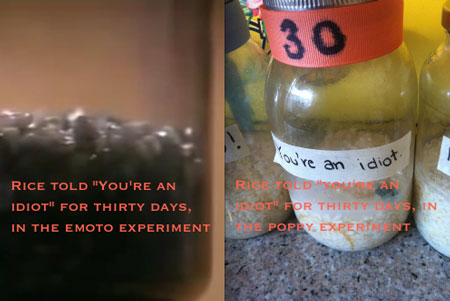
He should be second-worst (completely black in Emoto’s experiment), due to all that negativity going his way. Well, he was the only one to mold, though the top of the rice in his jar ended up being the most exposed to air of all four samples.
Here’s “Thank You!”:

“Thank You!” should be fermenting, turning yellow and making sweet, delicious smells. As you can see, she is anything but yellow. In fact, she seems to have lost some of her pigment during the experiment, since she and the others started out brown and are now nearly white.
As for fermenting? She’s certainly doing that, but the smell is anything but delicious. Like the others, it’s downright disgusting.
And here’s our old friend, “Michele Bachmann”:

“Michele” should be either disgusting or delicious, depending on her party affiliation and reaction to her namesake’s quotes. But as you can see, she looks nearly identical to “Thank You!” and “Uglo.”

In the end, it appears that Dr. Emoto’s assertion that intention can affect soppy rice doesn’t hold water. I can’t help but wonder if the well-meaning re-creators of this experiment on the internet didn’t help their rice along, exposing the neglected or hated rice to more air, changing the jars around to put them in different temperature or humidity conditions, or performing other tricks in an effort to support a well-intended but ultimately self-evident point: that being ignored or belittled hurts.
When all is said and done, apparently it was only Emoto’s voice that had the power to ruin water. To be fair, Moses had the same problem.
- Emoto’s doctorate is in Alternative Medicine, from the Open University of Mumbai. According to their website, the only requirement for this degree are one year of study and completion of one research project.
- Ho, Mae-Wan, “Crystal Clear: Messages from Water.” Accessed from the Institute of Science in Society, February 2014. http://www.i-sis.org.uk/water4.php
- Radin, Dean, PhD. “Double-Blind Test of the Effects of Distant Intention on Water Crystal Formation.” Published by EXPLORE: The Journal of Science and Healing, 2006. http://www.sciencedirect.com/science/article/pii/S1550830706003272
- Tiller later explained that he didn’t quite understand what What the Bleep was all about when he gave his interview.
- Tiller, William A. “What the BLEEP Do We Know!?: A Personal Perspective.” Vision in Action, Volume Two, 2004. Pg. 18. http://www.via-visioninaction.org/via-li/journals/What_the_Bleep_Perspectives_Vol2_No3-4.pdf
- Hall, Harriet. “Masaru Emoto’s Wonderful World of Water.” Originally published by Skeptical Inquirer, November/December 2007. Retrieved on RedOrbit.com, February 2014. http://www.redorbit.com/news/science/1144934/masaru_emotos_wonderful_world_of_water/
- Emoto, Masaru. “The Hidden Messages in Water,” Atria Books, 2004. Pg. 90-91.
- To his credit, he doesn’t appear to have ever marketed Emoto Blessed Water, showing either real sincerity or a lack of entrepreneurial creativity. I would like to suggest the name H2OMG.
- There is some disagreement over whether Emoto used dry or cooked rice, in his various versions of this experiment. The rice appears cooked in the documentary, and so I used cooked rice. Presumably this wouldn’t matter too much, as long as all samples received the same treatment.
- He did still cook his rice, which means it contained some additional water.
- Astute scientific readers will note that my two control jars have slightly different tops to the other two jars. They are right. Although I made certain that my “Thank You!” and “You’re An Idiot” jars were identical, as they are the most important to compare, I admit there could have been some slight variation in the conditions inside because of the different kinds of tops. However, they were all basically airtight and differed in size only slightly.

Carrie Poppy
Carrie Poppy is the cohost of the investigations podcast Oh No, Ross and Carrie . She regularly writes and speaks on social justice, science, spirituality, faith, and claims of the paranormal. She also performs, mostly in funny things. She only has one fully functioning elbow.
- 0% Financing Available - Buy Now, Pay Later with Sezzle
- Problems and Solutions
- Testimonials
- What Should I Buy?
- Call Us: 1 (800) 484-5698

- Kitchen, Shower and Portable Models
- Whole House Models
- Filter Models
- Commercial Models
- Search for:
No products in the cart.
Return to shop
Alive Water
Water experiment by dr. masaru emoto.
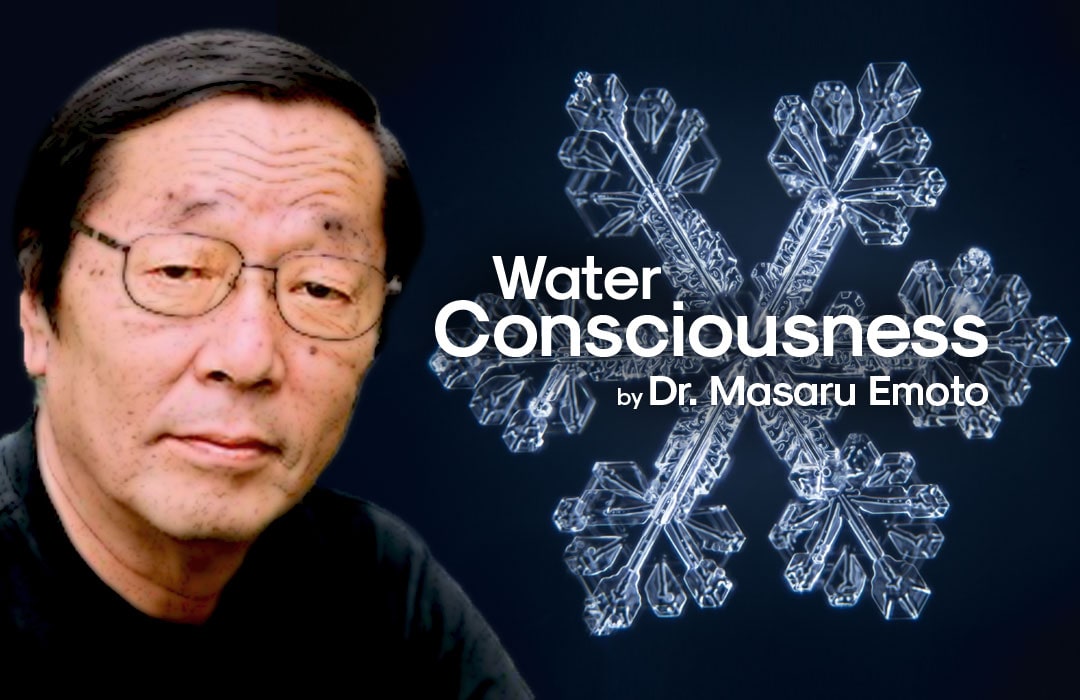
Dr. Emoto Believed, “ Water is the mirror that can show us what we cannot see. It is the blueprint for our reality, which can change with a single, positive thought. All it takes is faith if you’re open to it. ” Though for many of us, it is difficult to believe in the unseen, interestingly, there are water experiments and observations that explain water’s magnificent nature. In this article, we discuss Dr. Masaru Emoto, specifically water experiments by Dr. Emoto, and the concept of water’s consciousness. Understanding the consciousness of water will help you see the benefits water has to offer to you, and just how you can turn regular water into something more.
By understanding the water experiment done by Dr. Emoto, we will be able to see how water has phenomenal benefits depending on its surroundings. We will further delve into a way to treat water in order to maximize the benefits of drinking water, bringing more vitality to your water. All this through the teachings and findings of Dr. Masaru Emoto.
Content Navigation:
Who is dr. masaru emoto, how does the water experiment by dr emoto impact you, water consciousness with the vortex water revitalizer™.
Dr. Masaru Emoto was a Japanese water scientist, born in 1943 in Yokohama, Japan. He was an internationally renowned Japanese researcher, author, scientist, and businessman. He graduated from Yokohama Municipal University’s department of humanities and sciences, majoring in international relations. Additionally, he received certification as a Doctor of Alternative Medicine from the Open International University.
The New York Times bestseller “The Hidden Messages in Water” is an example of Dr. Emoto’s phenomenal work. Through his writings, he made millions of people realize that water is much more than just an H2O molecule. Dr. Masaru Emoto revolutionized the way we think about water, and its impact on our health, lives, and the environment. He was undoubtedly a genius of his time, one of the first of those who put forth the idea of water’s consciousness.
One of the boldest claims of Dr. Emoto that he managed to prove scientifically was that water is sensitive to our thoughts, words, and feelings. Because of this, water can change its molecular structure according to the environment it is introduced to. For instance, Dr. Masaru Emoto argued that prayer and heavy metal music could influence the molecular structure of water differently.
In his book, the Japanese water scientist and author says: “Water records information, and while circulating throughout the earth distributes information. This water sent from the universe is full of the information of life.”Dr. Emoto passed away on October 17, 2014 , but his work is still alive, spiking the interest of millions and encouraging scientists to research the concept of water’s consciousness further.
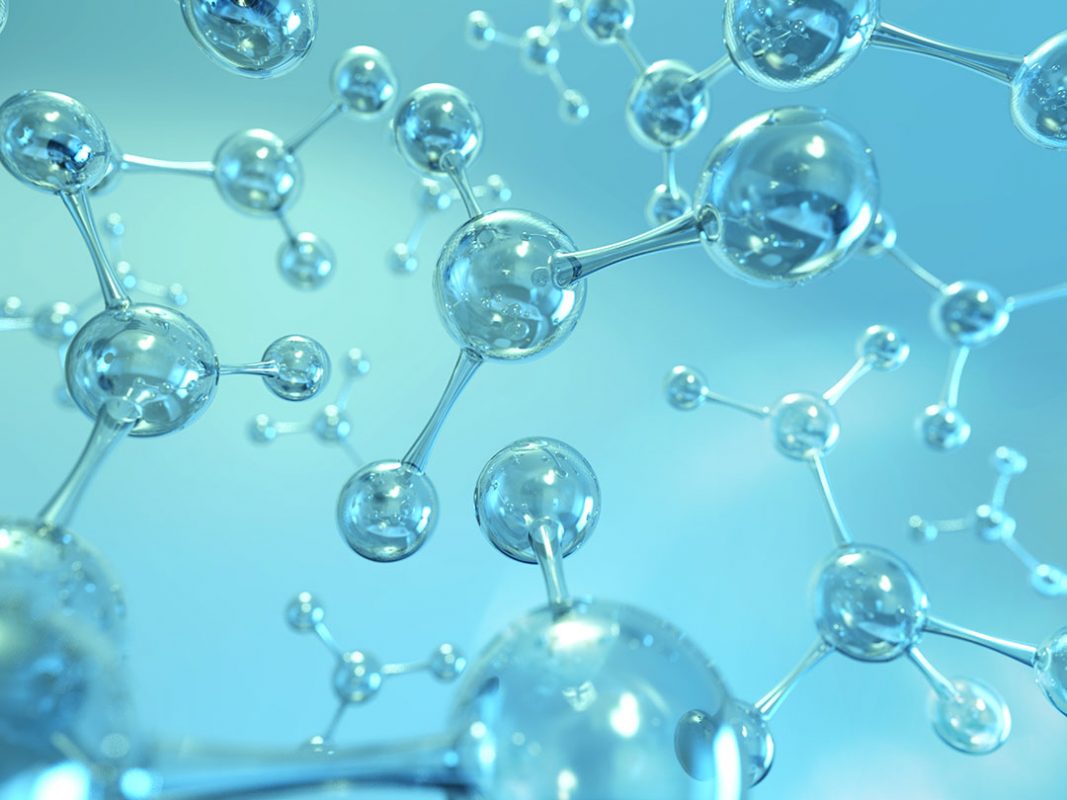
What Impacts the Water? Water Experiment by Dr Masaru
According to Dr. Masaru’s theory of water consciousness, water can respond to human emotions, thoughts, words, and even written messages.
The water can pick up the vibrations as a result of certain emotions and change its structure accordingly. For instance, when you say the word “Hope” to water and prepare the frozen crystals from this water, you will observe the creation of beautiful symmetry in the crystals.
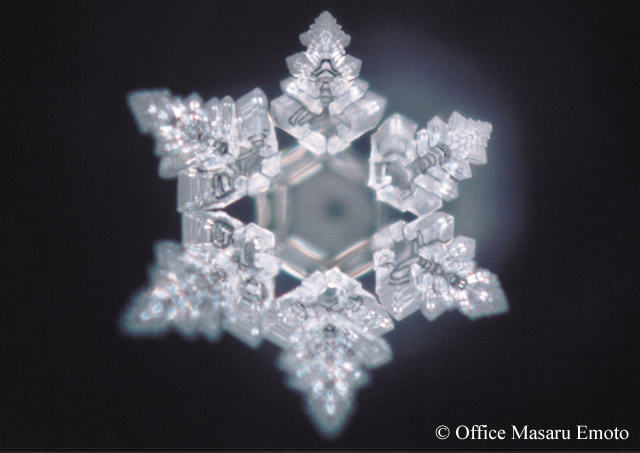
This can lead to the conclusion that drinking water with positive emotions such as love can have a positive effect on human health. Similarly, when you expose water to negative feelings such as hate, consuming it can be potentially harmful to your body.
As we see, emotions can alter the water’s form but can human thoughts also lead to an impact? The short answer – yes. Dr. Masaru Emoto’s experiments on water molecules actually proved that our thoughts, attitudes, emotions, and intentions could physically change the molecular structure of water .
For example, the crystals formed with water introduced to words of “love and gratitude” were clear, big, and beautiful. Similarly, water from various sources was exposed to prayers. Pictures before and after prayers showed mesmerizing changes in the molecular structure of water. The after-prayer structure in each case was much more defined and beautiful.
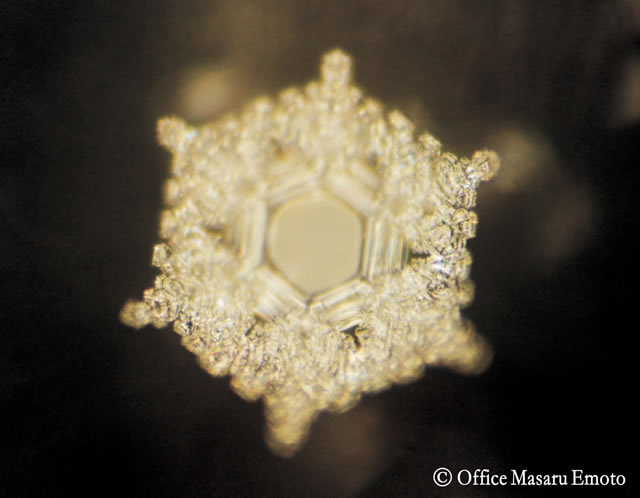
Thought about hate also resonates in water molecules, and thus it forms ugly and aesthetically less appealing crystals.
Dr. Emoto has conducted different experiments on the subject. To understand the importance and value of his work, let’s take a closer look at those experiments below.
Dr. Masaru Emoto’s Water Crystals Experiment and Its Findings
Masaru Emoto used high-speed microscopic photography to observe the crystals formed in the frozen water after exposing them to specific thoughts. Dr. Masaru Emoto’s method was freezing various 0.5ml water samples. For each case, at the temperature between -5 and 0°, different kinds of crystals were formed. Based on the crystals, Dr. Emoto withdrew conclusions about various water molecular structures.
When he exposed water to positive thoughts and loving words, the crystals formed beautiful, colorful, and snowflake-like patterns . On the contrary, when polluted water and the water exposed to negative word/thought were crystalized; incomplete, dull, and asymmetrical patterns were observed.
In a 2006 study , a group of researchers, including the Japanese water scientist Dr. Masaru, tested the hypothesis: water, when treated “with certain intention” can affect the ice crystals formed. The study was carried out under double-blind conditions. They took a sample of approximately 2,000 people in Tokyo who were instructed to make positive intentions toward water samples inside an electromagnetically shielded room. Similar water samples were also kept in different locations as a control. Ice crystals were formed from both sets of water and then photographed.
Then these images were blinded and tested for their aesthetic appeals by 100 independent judges. Surprisingly, the results showed that water treated with positive intentions received much higher scores than the controlled water samples.
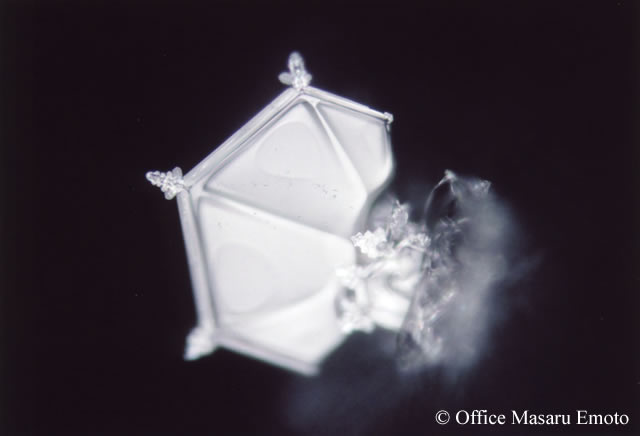
Dr. Masaru’s experiments proved that the molecular structure of water can be altered. This is based on water’s ability to retain the memory of everything it comes across. Positive words/good thoughts can bring positive changes to water.
Similarly, because nature is soothing and peaceful, the crystals formed from natural spring water were found more symmetrical, well-balanced, and attractive in Emoto’s experiments.
Water experiments done by Dr. Emoto convey a clear message about the water we use. Drinking clean water with positive energy can have a beneficial impact on our well-being. Water with a negatively altered molecular structure is not suitable for the human body at all. Therefore, it is imperative to treat water with love and care before we use it for drinking purposes.
Ultimately, water will become a part of our bodies, our plants, and our environment. For this purpose, we have to use water in its optimal state in order to receive the most benefits possible. For this, we have to look at structured water, also dubbed vortex water.
Just as water’s crystals alter with positive intentions, its movement can also change its inner structure. Science says that water molecules found in our rivers, streams, and other natural waterways are secured by vortex-like movements.
These movements create hexagonal micro-clustered molecular forms, similar to those experiments conducted by Dr Masuru. These inner molecular forms give water impeccable benefits such as self-cleaning, increased levels of dissolved oxygen, balanced pH levels, and much more. Perhaps that’s the reason Dr. Emoto found the structure of natural water more enchanting.
Understanding the consciousness of water through Dr Emoto’s water experiments, we can see just how vital water’s state is, but the water that we receive in our taps passes through unnatural and harsh treatment. This adversely impacts the water structure. Resultantly, tap water is depleted of qualities such as self-cleansing, optimal hydration, and balanced pH.
Keeping the finding of Dr. Emoto in mind, we know that ordinary tap water with adverse molecular structure can be hazardous to our health. What we actually need to do is to revitalize our tap water and bring it back to its original form.
With The Vortex Water Revitalizer™ , bringing ordinary tap water to its natural molecular state is easy. The water goes through a vortexing motion, imitating the motion water naturally goes through in nature. technology puts water through the natural vortex movement. After that, the harm caused to the water and its structure is eliminated.

As the structure is restored, water’s natural benefits double in all forms. Water becomes cleaner, more hydrating, and balanced, providing monumental advantages to our bodies, our homes, and our environment.
According to Dr. Masaru Emoto the philosophy regarding water consciousness, The Vortex Water Revitalizer™ that takes water’s natural needs into consideration is considered an optimal treatment solution. Water is a miraculous resource that proves to be a living system. With Dr. Emoto’s water experiments and the technology of The Vortex Water Revitalizer™ , it is possible to reap the benefits of water consciousness in your home .
Related Blogs
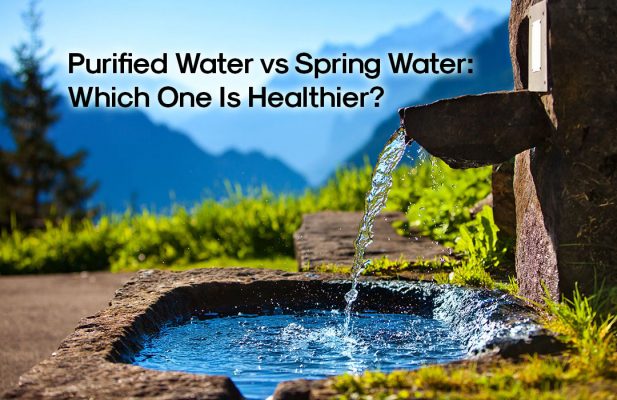
Purified Water vs Spring Water: Which One Is Healthier?
Nature has given us everything to fulfill our human needs on earth. Amongst all of [...]
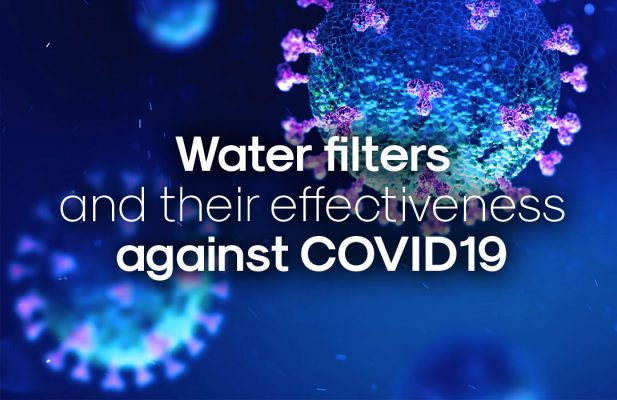
Water Filters and Their Effectiveness Against Covid19
Our lives had taken a drastic turn as COVID-19 made its way around the world. [...]
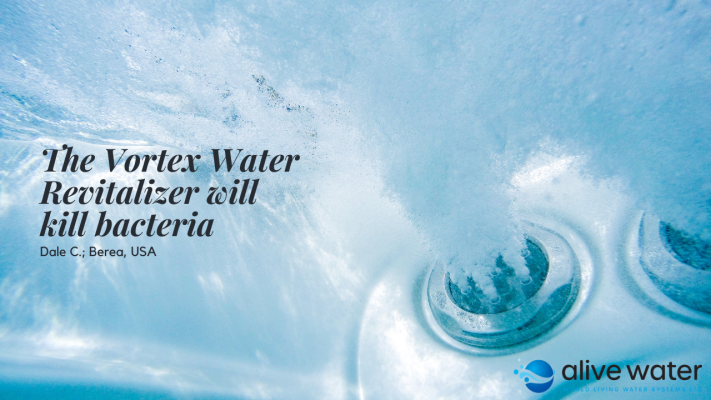

Discover a World Where Water Works Wonders with the Vortex Water Revitalizer
The transformative power of water is something that speaks directly to the core of our [...]
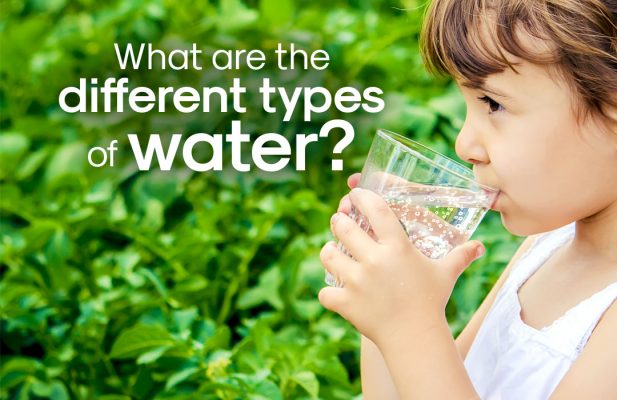
What Are The Different Types of Water?
The genius of his time, Leonardo Da Vinci, rightfully noted – “Water is the driving [...]

Discover Water Like Never Before: Eric’s Feel-Good Story
Let’s face it, the marketplace is a jungle and finding products that don’t just make [...]
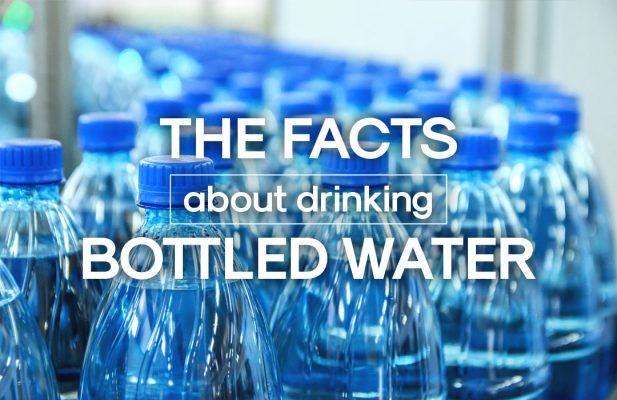
The Facts About Drinking Bottled Water
There is no second opinion that drinking enough water is good for our bodily functions [...]

Experiencing Positive Change with the Vortex Water Revitalizer
In the world of business, customer feedback is a treasure trove of insights. It not [...]
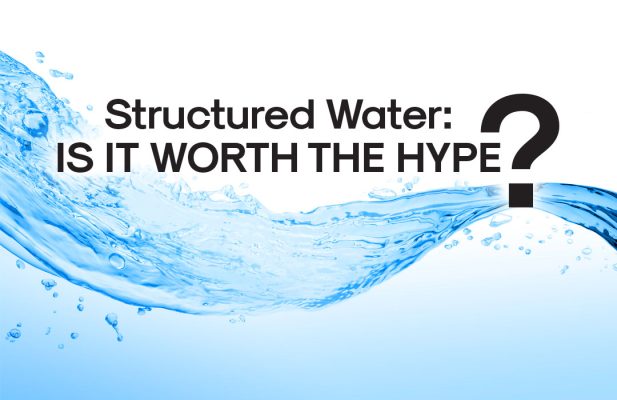
Structured Water: Is It Worth the Hype?
Over the past few years, water and its benefits have taken the internet by storm. [...]
12 thoughts on “ Water Experiment By Dr. Masaru Emoto ”
I am preparing a sermon about Dr. Emoto’s work with water. Would anyone be interested to read the draft?
Thank you for sharing your sermon Richard. Beautifully written.
yes please!
Where could I find this sermon. I would love to read/listen to it!
Hi Sheila we spoke to Rev. Dick Dinges and he was nice to give me approval on sharing his wonderful sermon. His sermon was given to Fellowship of the Inner Light in Virginia Beach and his email is ri************@ao*.com .
February 13, 2022 Love and Gratitude Matthew 10:42
At the church yard-sale this past summer I picked up this book, The True Power of Water, by Masaru Emoto. I saw it years ago at a book store, but did not buy it. This time I bought it and couldn’t put it down. The book is so interesting, and it pulls together so many of the concepts I cherish. You may have read the book, but let me summarize it for those who haven’t. Masaru Emoto was reading a book and came upon the question, “Are there any identical snow crystals?” That question resonated within him and prompted him to begin a study of water. His plan was to take photographs of ice crystals. He got an assistant and set up a laboratory. It took two months before he got the first photo. The successful method was to freeze water in a petri dish, and, using a microscope, take a photograph of it during the thawing window, which was determined to be two minutes.
Emoto and his assistant took lots more photos of water from many different sources, including tap water from many cities in Japan and other countries. He tested bottled waters from supermarkets, and natural water from springs. Most water he found was tainted and would not form crystals, and treated water had deformed crystals. He found that the purest water was spring water, water that is filtered by the Earth, a process that he said takes 30 – 50 years. Spring water formed the most beautiful crystals. I will share more of his conclusions in a minute, and make the photographs in his book available to you, but suffice it to say that Masaru Emoto became known worldwide as the only person conducting such a study by photographing water crystals.
In his book, Emoto wrote about what he learned by studying water crystals. He started with the Japanese word, hado, which literally means “life vibration.” His expanded definition of hado is “the inherent energy in all things,“ and “all the subtle energy that exists in the Universe.” How similar this is to my best understanding of God – “the intelligent energy within all things causing them to live and evolve into higher forms of life in relation to their environment.” However, Emoto did his research without any religious cause to support. He merely tried to scientifically demonstrate the properties of water. He wrote, “I am not a man of religion, nor do I want to praise religions unnecessarily. However, the prayers used for a long time by a religion have a strong hado energy. I feel that if we believe in our religion faithfully and recite the prayers undoubtedly, we will be blessed with a strong power.”
Emoto measured the purity of water samples, and also discovered that water is affected by the messages applied to it. For example, he labeled identical bottles of water. One was labeled “You fool.” The other was labeled “Thank you.” When thawing, the water inside the bottle with the “Thank You” message formed a beautiful crystal, looking somewhat like a snowflake. The other water did not form a crystal at all, but the photograph looked more like a festering mass of points of light. The same results occurred whether the messages were written on the bottles, or if people spoke the messages to the water. It seemed to Emoto that the water had a consciousness of its own, and formed crystals in response to positive messages, as if to say “Thank you.”
This resonates with a concept I learned from studying near-death experiences. We are co-creators with God, and our actions, words, and even our thoughts have an effect on everything around us. This highlights the importance of living consciously, aware that we are having a continuous impact on the world around us. Emoto theorized that the vibrational energy we project affects everything at the sub-atomic level, then at the atomic level, the molecular level, and the cellular level. If allowed to continue over time, negative vibrations will even affect organs within the body and result in illness. Conversely, positive vibrations will result in good health.
Emoto and his assistant continued over the years taking water samples and photographing containers of water labeled with various messages. The most significant result was with water that was labeled “Love and Gratitude.” It formed a more beautiful crystal than any other. He described it as “joyful.” This resulted in his most significant teaching. Everything is energy, and everything has a vibration. Love is the highest vibration. Our healthiest state is achieved when we love someone or something beyond ourselves, and when we feel gratitude after having been loved. He wrote that you need to have both of them together, love and gratitude. Love can’t happen without a receiver. Emoto likened this to the sun and the moon. The sun gives. The moon receives. Love is extended and is received with gratitude.
Just sending love to others is not enough; you have to be willing to receive it too. Dr. Elizabeth Kubler-Ross is well-known as a forerunner in the field of death and dying. Recently I learned that she was a patient in a nursing home for several years before her death. Why did such a loving person have such an end? The answer is perhaps she needed to learn to accept love. Perhaps her stay in the nursing home receiving the care of others completed her life’s education. She gave love, and she finally learned to receive it.
In his book, The Purpose of Life, David Sunfellow included the story of Mary Deioma. She experienced what she called “a moment of enlightenment” while she was driving. This happened during a time of distress, and after she asked God for help. She writes, “In that moment a beam of pure white came out of the sky and came down and touched me on my shoulder. I was so filled with love it’s impossible to describe how much love there was in that moment. . . . And then my soul went out of my heart. My soul went up the beam and as it went up the beam I felt so connected to all souls. As I reached the top of the beam, I rippled out in concentric circles and I became one with every soul on the planet. Then my focus shifted and I became one with all the trees on the planet. Physically, I could feel that I was in a tree. And I was looking at another tree in the forest, which was me, looking back at me. It was so incredible. And then, I was all the grass and I was looking at a blade of grass next to me that was me looking back at me. It was amazing.
“Then my focus shifted and I was a rock on a mountain. I was the Earth. And that really surprised me because I never imagined that inanimate objects are filled with God Consciousness. Then my focus shifted again and it was all of the entire universe – the complete, entire universe. So humongous!
“At the same time, I don’t know how, but I could see the smallest, tiniest particle. What the universe is made out of. It was this massive, uniform field of particles. At the tiniest level, the tiniest particle, smaller than anything we can record, it was pure white, sort of a radiant light. This particle was pure energy. But more than that, this particle that everything in the entire universe is made out of, is LOVE! A tangible love that is the stuff of God. It just blew me away! It was awesome.
“I realized that at the same time all of this was happening, I was driving along the road. The whole thing didn’t take more than a second and a half.” In her story Mary affirms what Emoto taught about everything being energy and everything sharing God Consciousness. That would include water.
With sentient beings the exchange of energy is often reciprocated. One NDEr was admiring the beauty of a flower, and perceived that the flower sent back two photons of light. Love and Gratitude.
If we accept these things as true, then it’s important to know how to apply them to ourselves. Emoto points out that we are 70% water. We need to drink the purest water available, but we also need to monitor the energy we give to and accept from others. As far as taking in water, Emoto wrote that we can put a Love and Gratitude label on a container of water, and the water will respond by becoming purer. He wrote that we can also talk to and pray over the water. This is such a simple thing to do, and it resonates with so much truth. So I did it at home. I put a Love and Gratitude label on a pitcher of water, and I drink from it. Emoto has suggested doing it five times a day.
The experiments of Emoto affirm the effectiveness of prayer. He cites the story of Chief priest Houki Kato of a Japanese Esoteric Buddhist temple, who prayed at the fouled Fujiwara Dam for an hour. Water samples were taken before and after. After the prayer an observer said, “Wow! Look, the color of the reservoir is changing rapidly!” It got clearer. Earlier it had no reflection on top, but did afterward. Test results showed no crystals formed from the water sample taken before the prayer, but “a crystal of heavenly beauty” from the sample taken afterward. It had a double structure of a small hexagon inside a beautiful outer hexagon.” (See Fig. 3.3) Furthermore, Emoto taught for us to pray in the past tense, and to visualize the prayer as having already been answered.
Not only do we need to drink good water, but we also need to be mindful of the information we receive. Negative information will have a negative influence on us, and vice versa. This might apply to watching the news, selection of movies, video games for children, and even the company we keep. In his experiments, Emoto noted that water kept close to cell phones and computer screens failed to form crystals, unless it was labeled “Love and Gratitude.” That positive message seemed to overpower the negative effects of electronic radiation.
You may remember Marlon Colley. He had a spiritually transformative experience in which angels communicated many messages to him. One of the messages was for him to move out of the densely populated area of Virginia Beach because there was too much negative electronic vibration here. He related this and other messages he received at the Mind, Body, Spirit Discussion Group at my home many years ago. He said it was difficult for him to attend the meetings because of all the electronic vibrations, especially from my old TV set. He took the message of the angels seriously, and moved to a more remote location in southern Virginia Beach.
Emoto also observed the effects of hado in experiments with rice. He used three jars of rice. One was labeled “You fool,” the second “Thank you,” and the third was not labelled at all. It was ignored. The results were remarkable. After a month the rice in the positively labeled jar smelled mellow as of fermented malt. The rice in the jar labelled “You fool” turned black. The ignored rice turned black even before that. This experiment showed that receiving negative attention is better than receiving no attention at all. This informs us about the behavior of children and grandchildren who misbehave, even though they know they will get only negative attention.
Emoto reminds us to say positive and inspirational words to our children, and to give positive messages to those who are sick. He wrote that it sends a negative vibration to children to tell them, “Do this!” but a positive vibration to say, “Let’s do this together.” “Do this!”, when written on a water sample, made the shape of a frightening circle in the ice, but “Let’s do this together” formed a crystal Emoto described as “cute.”
I note that Jesus spoke of water when he taught about loving children. He said, “And if, as my representatives, you give even a cup of cold water to a little child, you will surely be rewarded” (Matthew 10:42). Emoto also created a device that would measure the hado in items he examined, including foods. He determined that different foods have different vibrations, and the various vibrations resonate with the various cells and organs of our body. That’s why we should eat a varied diet.
Emoto’s scientific conclusions for a good diet compare favorably with what Edgar Cayce said, what dieticians tell us today, and also what souls advanced into the future told Dr. Linda Backman. It’s a diet of healthy protein, fruits and vegetables, unprocessed grains and legumes. Backman recorded that dairy and gluten are acceptable unless there is an intolerance, and that meat should be ingested in moderate amounts, with fish and seafood as the main sources for protein. High-fat and fried foods are to be kept to a minimum or avoided. So what we accept as true today remains true in the future.
Emoto rated foods not only on their content, but on how they are prepared. He found that home-cooked meals rated high for value. That is food prepared with love. On the other hand, food prepared at home with anger had low hado. An example of this is “Why do I have to make such a troublesome dish when I don’t have time?” So Emoto recommended for those preparing meals to energize them with love, and for family members to receive those meals gratefully. When NDEr Howard Storm was recovering from a perforated stomach in a hospital in Paris, he was unable to keep any food down. His nurse told him she had a remedy. She would prepare a milkshake with love, and he would be able to keep it down. She did, and he did.
Emoto also applied his discoveries to healing. He wrote, “To live a healthy life, keep your thoughts positive. I am not a medical doctor, but I believe that all doctors should be philosophers as well as healers. The doctor’s deep insight and compassion heals patients.” He notes that in the old times doctors were deeply involved with spirituality and religion as priests and shamans. He recommended self-healing by writing the antonym of your illness or malady onto a label and putting it on your water container. He taught that water can be programmed to restore health.
Emoto further recommended from his findings to listen to music for its good effect. He wrote, “Good music reaches every one of our sixty trillion cells.” He recommended against heavy metal music, which did not form crystals. He recommended a positive daily routine, saying “Thank you” at every activity, affixing a Love and Gratitude note in the shower, on the phone and on the computer screen. He recommended for an exchange of air to avoid stagnation, noting that still water often stagnates. Open a window if the weather allows. He allowed drinking of alcohol in moderation inasmuch as it facilitates the expression of true feelings. He would allow no negative talk in social gatherings. He recommended that we fill our lives with those activites that cause us to want to say “Thank you,” and then to let the gratitude rise up within us.
Emoto’s experiments also give us hope. Lately we have been thinking about Earth Changes. The Earth is 71% water. Our prayers for the renewal of the Earth are effective. As an illustration, Emoto rated tap water in various cities three years apart. In one Japanese city, the water was tested but failed to produce a crystal, but the people of that city were prayerful about restoring the environment. Three years later the water was tested again, and it produced a display of beautiful crystals. Such prayer is a way for us to live in harmony with Nature, which is the future toward which we are moving.
The book is so easily understood, and easily applied. I brought lots of blank computer labels with me today. You can make some for yourself. I made some and put one on my water pitcher, over my computer screen, on my cell phone, and another one over the door of my granddaughter’s bedroom. I also brought blank 3×5 cards. I suggest that you write Love and Gratitude on one and keep it in your pocket. The message may transform your health and your life. In summary, everything is vibration. Your thoughts will resonate on everything around you. In your work, try to think of Love and Gratitude. Send Love to the people, animals, and plants within your engagement. Be appreciative, saying “Thank you” to everyone and everything that adds to your life. Your vibration will fly off the roof, and so will everyone else’s.
Now let me ask you, “Do you resonate with any of this?” Did it feel true to you? I see heads nodding in affirmation and thumbs up. On Coast-to-Coast AM on the night of Thursday, Nov. 4, 2021 I heard author Dean Radin talk about his book, Real Magic, and the research the led up to writing it. His scientific findings confirmed what Emoto wrote. In double-blind experiments people had better moods after eating chocolates that were blessed than others eating the same chocolates without such a blessing; and persons who drank a blessed tea has better moods after drinking the blessed tea than others who drank the same tea without a blessing. A third experiment was done with a species of plant that is known to respond to human emotions. There were two identical plants. One was watered with blessed water; the other with water that was not blessed. The one receiving the blessed water flourished noticeably more than the other.
All of this reminds me of the gratitude I have for the Earth and the plants that flourish in my garden.
So, speak kindly to one another. Bless one another with thoughts and words, and lift others in mood, mind, and body. And bless yourself with a grateful spirit. Amen.
www.fellowshipoftheinnerlight.com https://www.youtube.com/watch?v=-6cg5eIysXM&t=720s
Yes, please!
Please send me your draft. My email address is me*****@gm***.com .
I indeed would…Very much like to…
If I can still have it I would be delighted!
Pingback: I Love You Means I Love You and That’s That - The LifeLine Technique®
Pingback: Alt om Krystallernes Betydning - læs mere om Smukke Sten her
Det er jeg helt enig i. Du kan emaile mig paa mikael@alivewater…….com spam prevention dots:)
Leave a Reply Cancel reply
Your email address will not be published. Required fields are marked *
Save my name, email, and website in this browser for the next time I comment.
Username or email address * Required
Password * Required
Remember me Log in
Lost your password?

COMMENTS
Masaru Emoto (江本 勝, Emoto Masaru, July 22, 1943 – October 17, 2014) was a Japanese businessman, author and pseudoscientist who claimed that human consciousness could affect the molecular structure of water. His 2004 book The Hidden Messages in Water was a New York Times best seller. His ideas had evolved over the years, and his early work revolv…
The experiment, seen here in its original form, had Emoto pouring water over cooked rice [9] in three different beakers, then labeling one “Thank You!,” one “You’re An Idiot,” …
ELI5: Doctor Masaru Emoto's Rice experiment I understand what they did while conducting the experiment, but, it confuses me how the results are even possible. Can anyone with a science …
Please subscribe, like & comment on my channel here and encourage your friends to do the same so we can share more Kindness. Hit the link to spread more Kind...
Emoto's water experiment shows only that water can produce shapes that look pretty or ugly to us. It is interesting looking only at the anecdotal, qualitative level, and it had no results when quantified. His other experiment, involving …
In this article, we discuss Dr. Masaru Emoto, specifically water experiments by Dr. Emoto, and the concept of water’s consciousness. Understanding the consciousness of water will help you see the benefits water has to offer to you, …
Today we're going take a look at one of the founders of a pseudoscience that has, for more than three decades, given birth to a whole slew of knockoff pseudosciences pertaining to water. The man is Masaru Emoto, …